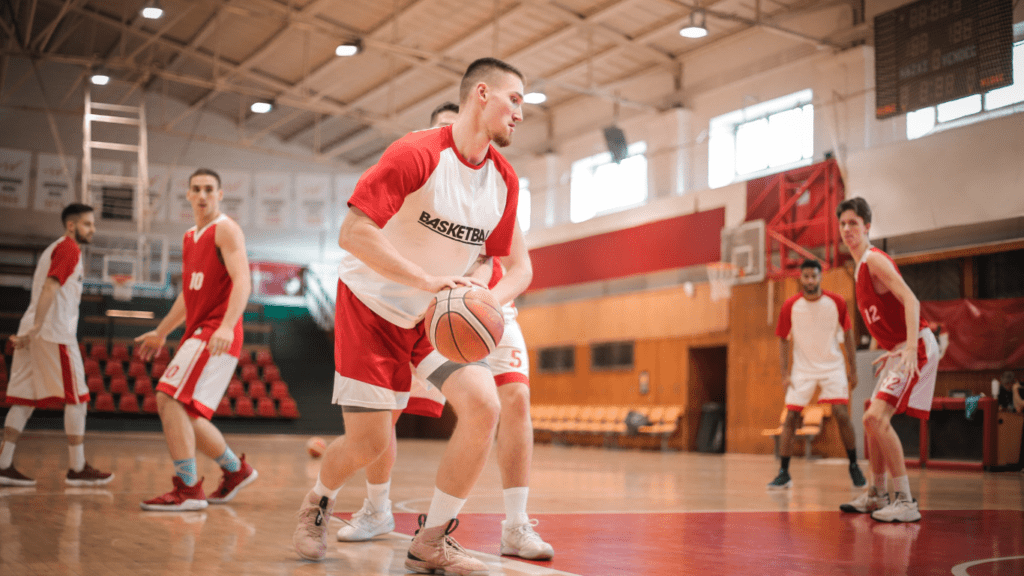As a coach and player, I’ve seen firsthand how small-sided games can transform skill development. These dynamic formats not only make training more enjoyable but also create the perfect environment for honing tactical and technical abilities.
When players are engaged in smaller teams, they get more touches on the ball and are forced to make quicker decisions, which is crucial for their growth. Incorporating small-sided games into practice routines can elevate performance levels significantly.
It’s not just about playing; it’s about understanding the game better. Players learn to read situations, communicate effectively, and adapt their strategies in real-time. Whether you’re a seasoned coach or just starting out, exploring the benefits of these games could be the key to unlocking your team’s potential.
Overview of Small-Sided Games
Small-sided games represent a focused approach to soccer training that involves fewer players on a reduced field size. These formats emphasize skill development within a tactical framework, promoting a fast-paced and engaging training environment.
Definition and Purpose
Small-sided games refer to match formats typically involving fewer than 11 players, with variations including 3v3, 4v4, or 5v5. The primary purpose of these games is to maximize player involvement, enhance ball skills, and refine decision-making processes.
By reducing the number of players, each athlete experiences increased touch frequency on the ball, leading to improved technical execution and tactical awareness.
Benefits of Small-Sided Games
The benefits of small-sided games include:
- Increased Engagement: Players remain actively involved, with minimal downtime.
- Enhanced Skill Development: Frequent ball touches allow for better control and technique refinement.
- Faster Decision-Making: Players learn to analyze game situations rapidly and respond effectively.
- Improved Team Communication: The intimate setting fosters better communication and teamwork among players.
- Adaptable Strategies: Athletes practice various game scenarios, strengthening their ability to adapt tactics in real-time.
Integrating small-sided games into training not only bolsters individual skills but also enhances overall team dynamics, contributing to a comprehensive understanding of the game.
Tactical Skills Development
Small-sided games promote tactical skills by creating specific game situations where players can develop their understanding of positioning, movement, and teamwork. These formats offer real-time challenges that mirror match scenarios, enhancing a player’s ability to read the game.
Understanding Game Situations
Understanding game situations involves recognizing patterns and adjusting tactics accordingly. Small-sided games present varied scenarios that require players to analyze space and opponents dynamically.
For example, in a 4v4 setup, players encounter multiple tactical elements, such as pressuring opponents, creating space, and supporting teammates. These situations cultivate a deeper comprehension of in-game tactics and strategy, encouraging players to instinctively adapt their play and make informed choices.
Decision-Making in Small Spaces
Decision-making in small spaces focuses on quick, effective choices under pressure. Small-sided games force players into tight situations, demanding swift reactions and intelligent decisions.
For instance, during a 3v3 match, players must evaluate options rapidly, whether to pass, dribble, or shoot. This environment sharpens their ability to assess risks and rewards, leading to improved tactical awareness.
Continuous exposure to these scenarios enhances not only individual decision-making but also synchronizes team strategies on the field.
Technical Skills Enhancement
Small-sided games significantly improve players’ technical skills by providing ample opportunities for practice in a dynamic environment. These training formats emphasize crucial skill development, including ball control, passing, and shooting.
Improving Ball Control
Improving ball control occurs through repetitive interactions with the ball in small-sided games. Players engage in numerous touches during each match, resulting in enhanced dribbling, trapping, and shielding techniques.
For instance, in a 3v3 game, the limited space forces players to refine their ball handling skills, enabling quick adjustments and accurate touches. Enhanced ball control translates to increased confidence on the field, crucial for effective gameplay.
Passing and Shooting Techniques
Passing and shooting techniques benefit from the fast-paced nature of small-sided games. Players practice various passing styles, including short, long, and driven passes, while under pressure from opponents.
In a 4v4 format, each player’s ability to make quick decisions ensures a fluid ball movement amongst teammates. Additionally, shooting practice becomes more intense, as players frequently encounter goal opportunities.
They refine their techniques, focusing on precision and power in various shooting scenarios. Improved passing and shooting contribute directly to higher goal-scoring chances and successful team plays during matches.
Implementing Small-Sided Games in Training
Incorporating small-sided games into training sessions effectively enhances player skills and understanding of the game. Here’s how to design drills and monitor progress for optimal outcomes.
Designing Effective Drills
Creating effective drills involves focusing on specific objectives tailored to the team’s needs. I recommend considering these elements:
- Player Numbers: Adjust the player count to ensure each participant engages actively, like using 3v3 or 4v4 setups.
- Field Size: Modify the field dimensions based on skill level and objectives, creating tighter spaces for younger players or larger areas for advanced groups.
- Game Rules: Implement unique rules to challenge players, such as limiting touches or introducing scoring bonuses for teamwork, which encourages decision-making.
- Focused Objectives: Set specific goals for each drill, like improving passing accuracy or defensive organization, ensuring players understand the intended learning outcomes.
- Progression: Gradually increase complexity by adding more players or varied objectives, allowing progression as players improve.
Each drill should maintain a balance between challenge and skill level, allowing players to experience growth while remaining engaged.
Monitoring Player Progress
Tracking player progress ensures that the implementation of small-sided games achieves the desired outcomes. I emphasize the following methods:
- Performance Metrics: Use objective metrics, such as goals scored, assists, or successful passes, to quantify player contributions during small-sided games.
- Observation: Actively observe players during drills, noting specific behaviors like decision-making speed, positioning, and communication effectiveness.
- Feedback Sessions: Conduct regular feedback sessions with players, discussing their experiences and areas of improvement, fostering a growth mindset.
- Video Analysis: Utilize video analysis tools for reviewing gameplay. This allows players to visualize their performance and understand tactical decisions better.
- Self-Assessment: Encourage players to assess their own performances and set personal goals, promoting accountability and individual growth.
Monitoring progress helps refine training approaches and ensures that small-sided games effectively develop both tactical and technical skills.




